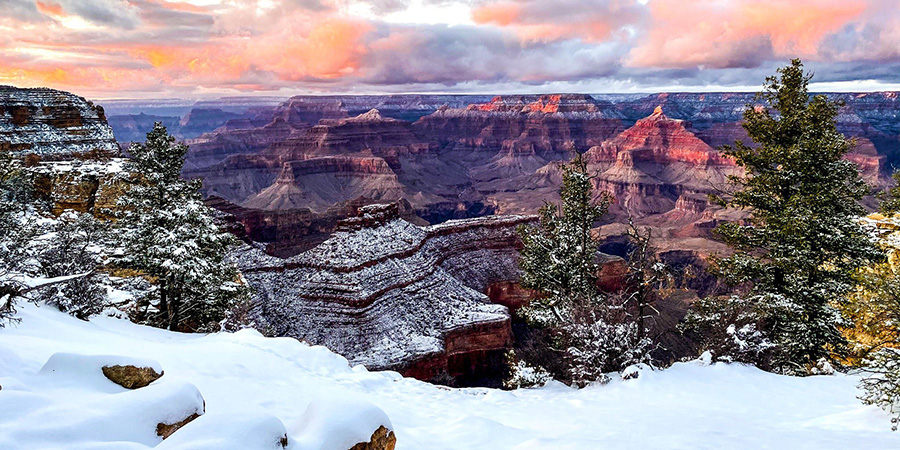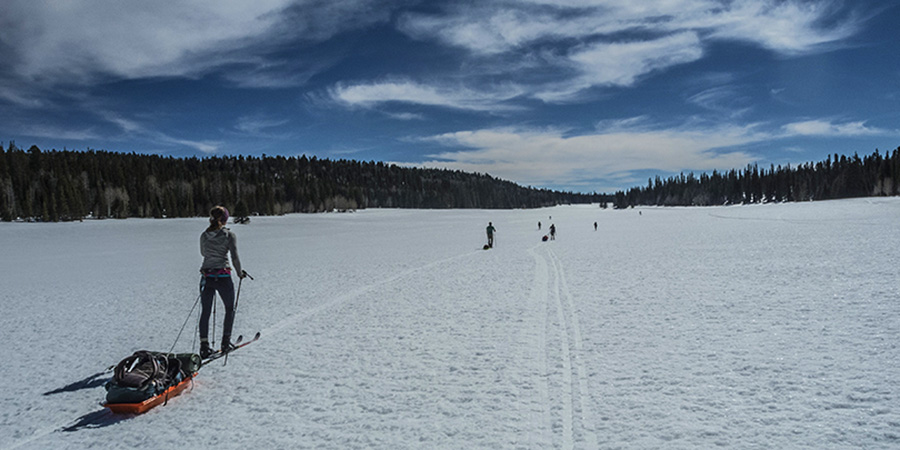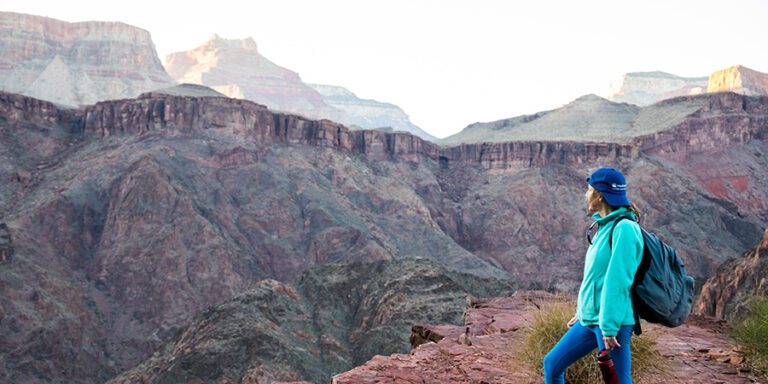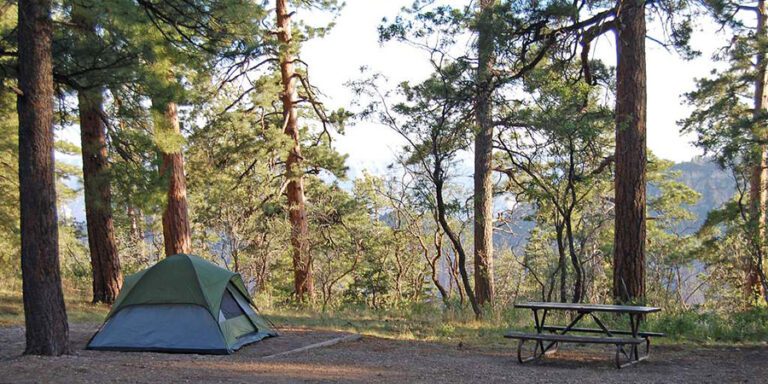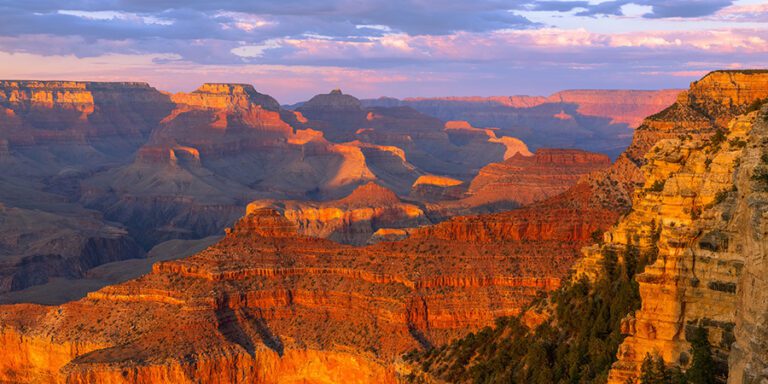
Don’t let a little snow keep you from visiting the Grand Canyon. Here’s everything you need to know for a winter trip to the big ditch.
The days may be short and temperatures low, but winter is as good a time as any to visit Grand Canyon National Park. Seasons bring subtleties to the canyon of course, but rocks look about the same year-round, so the vistas are always stunning. Scarce crowds, sparkling snow, and cheaper travel sweeten the deal. Here’s how to make the most of you winter trip.
The basics of a Grand Canyon winter trip
Winter settles into the Grand Canyon by December, with temperatures dropping into the teens at night. If visiting from November to March, be prepared for inclement weather. Storms dump 50 to 100 inches of snow on the rim each year, but if you arrive prepared, winter just might be your favorite time to visit.
What to bring:
- Warm jacket, hat, gloves, wool socks, waterproof boots, etc.
- Lots of additional layers
- Windshield scraper (if you’re driving)
- Crampons or other traction if you plan on hiking
Where to go at the Grand Canyon in the winter
The South Rim is open year-round, including lodges, restaurants, visitor centers, shops, etc. Parking spots are plentiful during the off-season and scenic viewpoints relatively uncrowded. Hermit Road, which is usually only accessible via park shuttle bus, is open to all vehicles in the winter (another perk of winter visits). Roads on the South Rim may temporarily close during or after snowstorms, so check the forecast before your trip to avoid getting stranded.
The North Rim is completely closed from December to May, but with a backcountry permit, you can hike across the canyon, from the South Rim to the North Rim, or ski in from the north, starting at Jacob Lake. Both are multiday trips that require winter camping. More on backcountry permits ›
What to do at the Grand Canyon in the winter
Everything you can do at the Grand Canyon in the summer, you can do in the winter. Here are a few winter-specific tips:
Winter hiking in the Grand Canyon
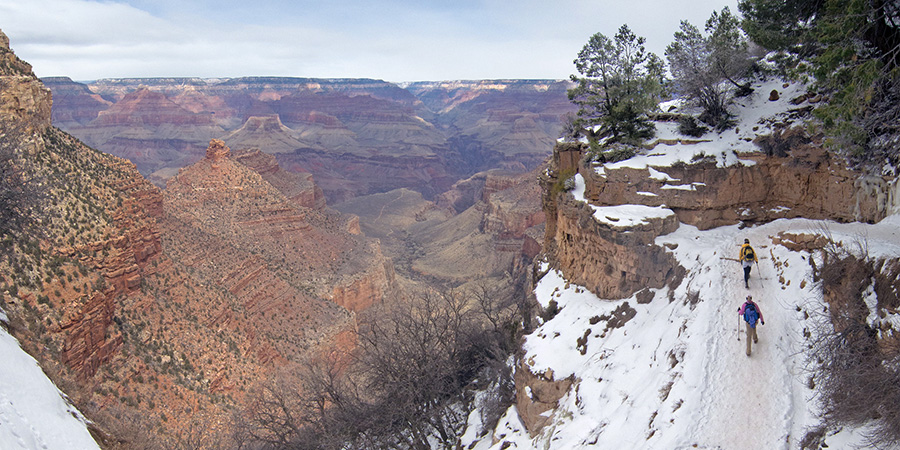
Trail conditions vary greatly in the winter, depending on recent snowfall, whether the trail is shaded or exposed, and how often it gets used. It’s possible the trails will be snow-free, but it’s equally likely that they will be quite icy. The first few miles of Bright Angel and South Kaibab trails can be super slippery — hikers and mules pack down snow, which quickly turns to ice as it melts during the day and refreezes at night.
The 5,000-foot difference between the rim and the river means that snow tends to disappear as you drop in elevation. Bring traction devices (Yaktraxs, Microspikes, etc.) for your boots. You likely won’t need to wear them for your whole hike, but you’ll be glad to have extra grip when faced with slick, steep switchbacks. North facing trails can be especially slick. Call the backcountry office for recent reports and conditions.
Note: Water spigots along the Bright Angel Trail are turned off in the winter, so plan accordingly.
Cross country skiing on the North Rim
The road to the north rim of the Grand Canyon is snow-covered and closed to vehicles throughout the winter, but strap on some skis or snowshoes and you’ll have the sights to yourself. It’s about 45 miles from Jacob Lake to the North Rim — don’t underestimate the challenge. The North Rim is higher in elevation and gets more snow than the South Rim. The route is ungroomed, nights are long, and help is a long way out. Talk to the rangers at the backcountry office to make sure you’re prepared for the trip.
Inside activities
Cold weather hiking not your thing? That’s ok. There are plenty of rim-side attractions to keep you busy. From the geology museum, to the Desert View Watchtower, you can learn about and experience the canyon from indoors.
Check out our Grand Canyon in a Day guide for ideas on how to make the most of your visit.

